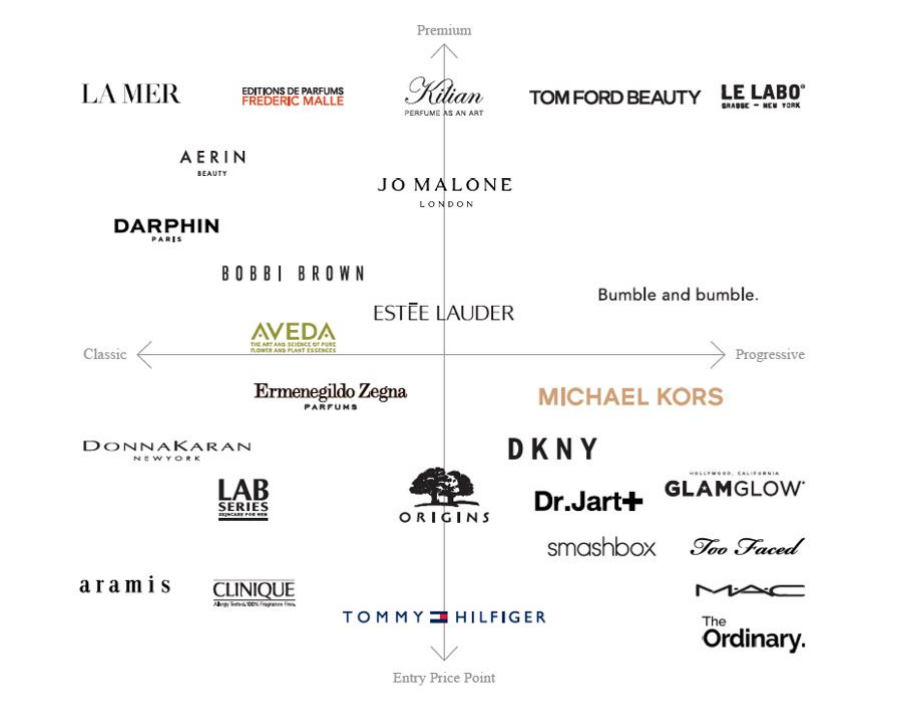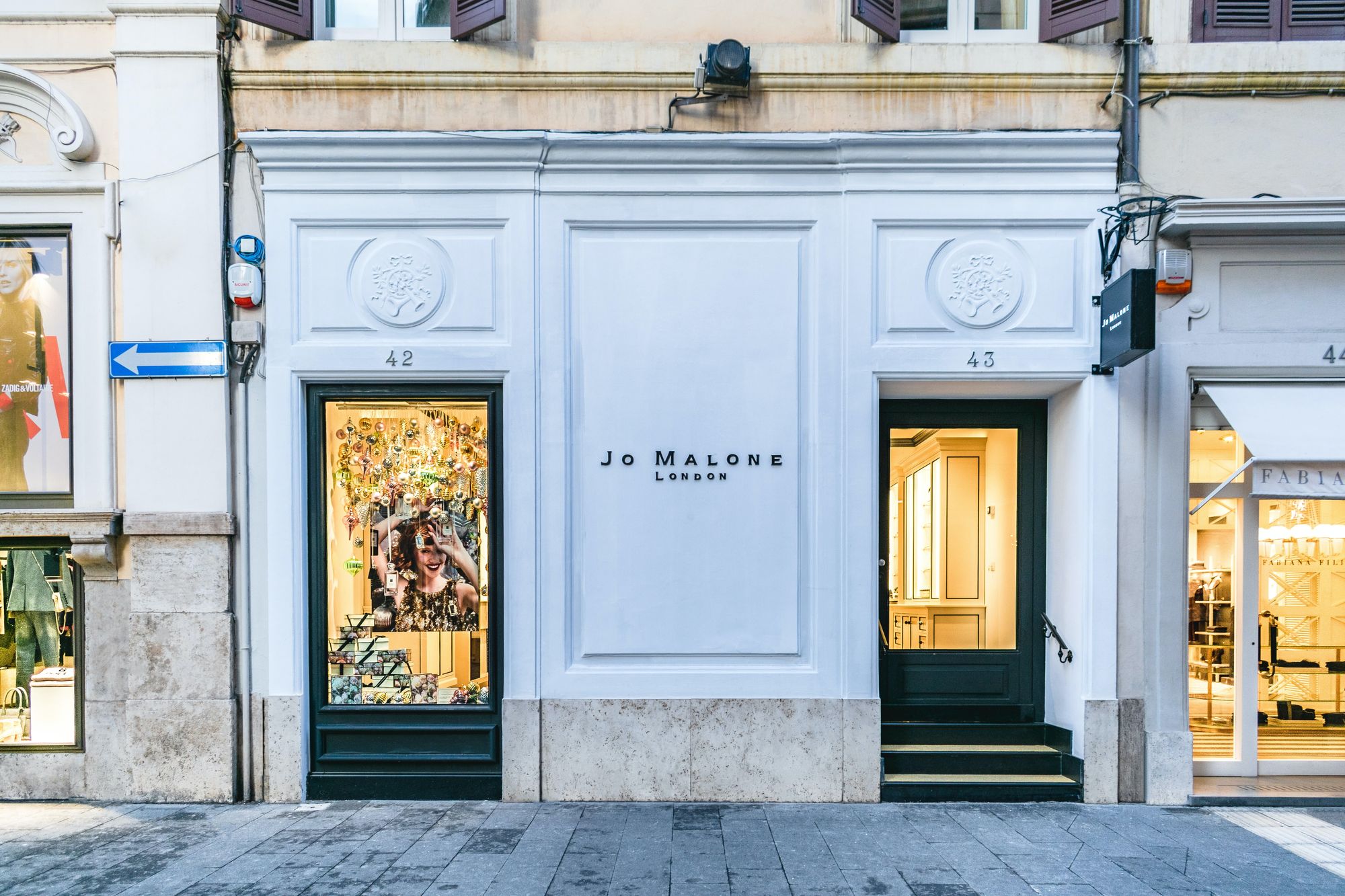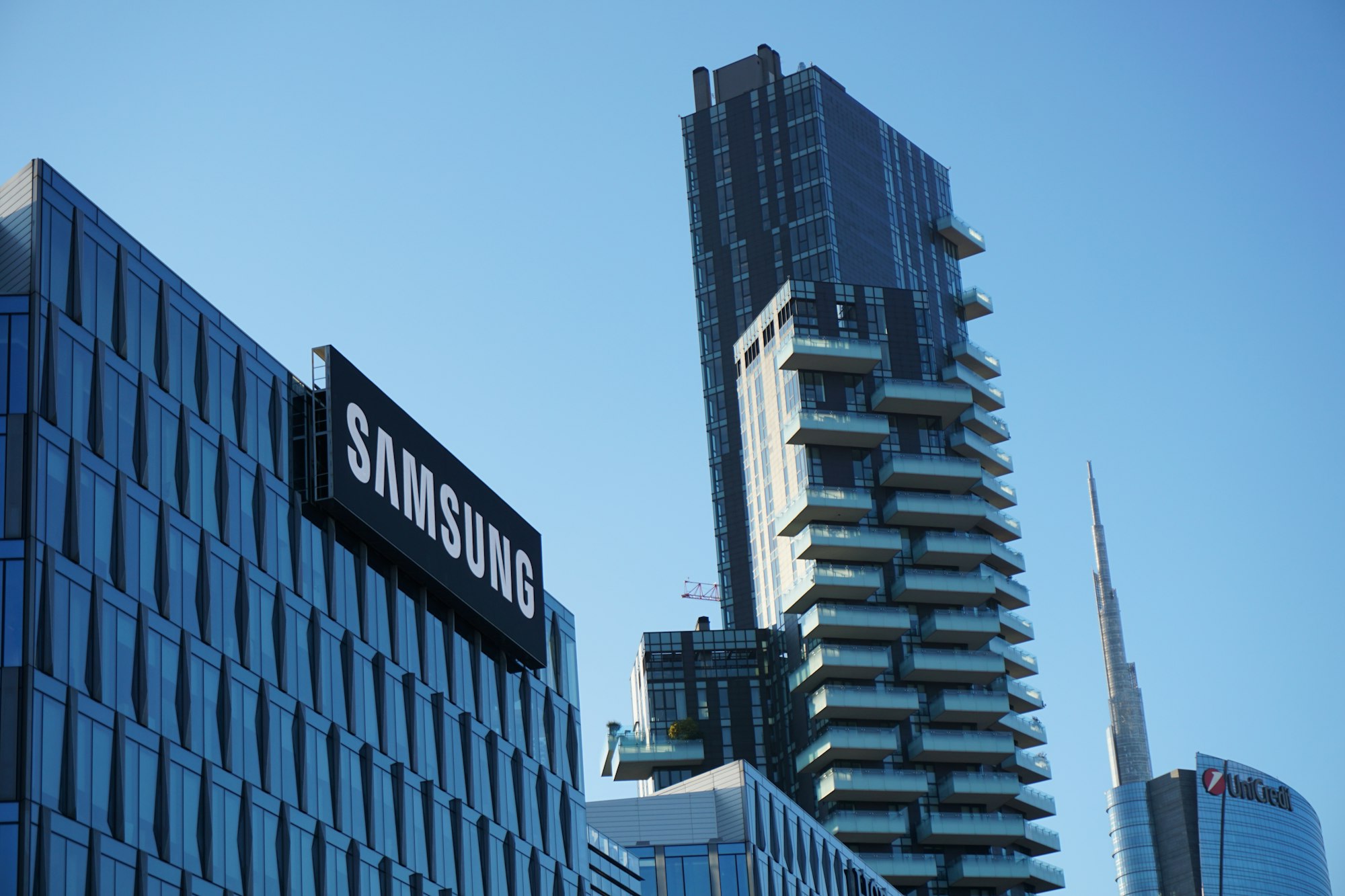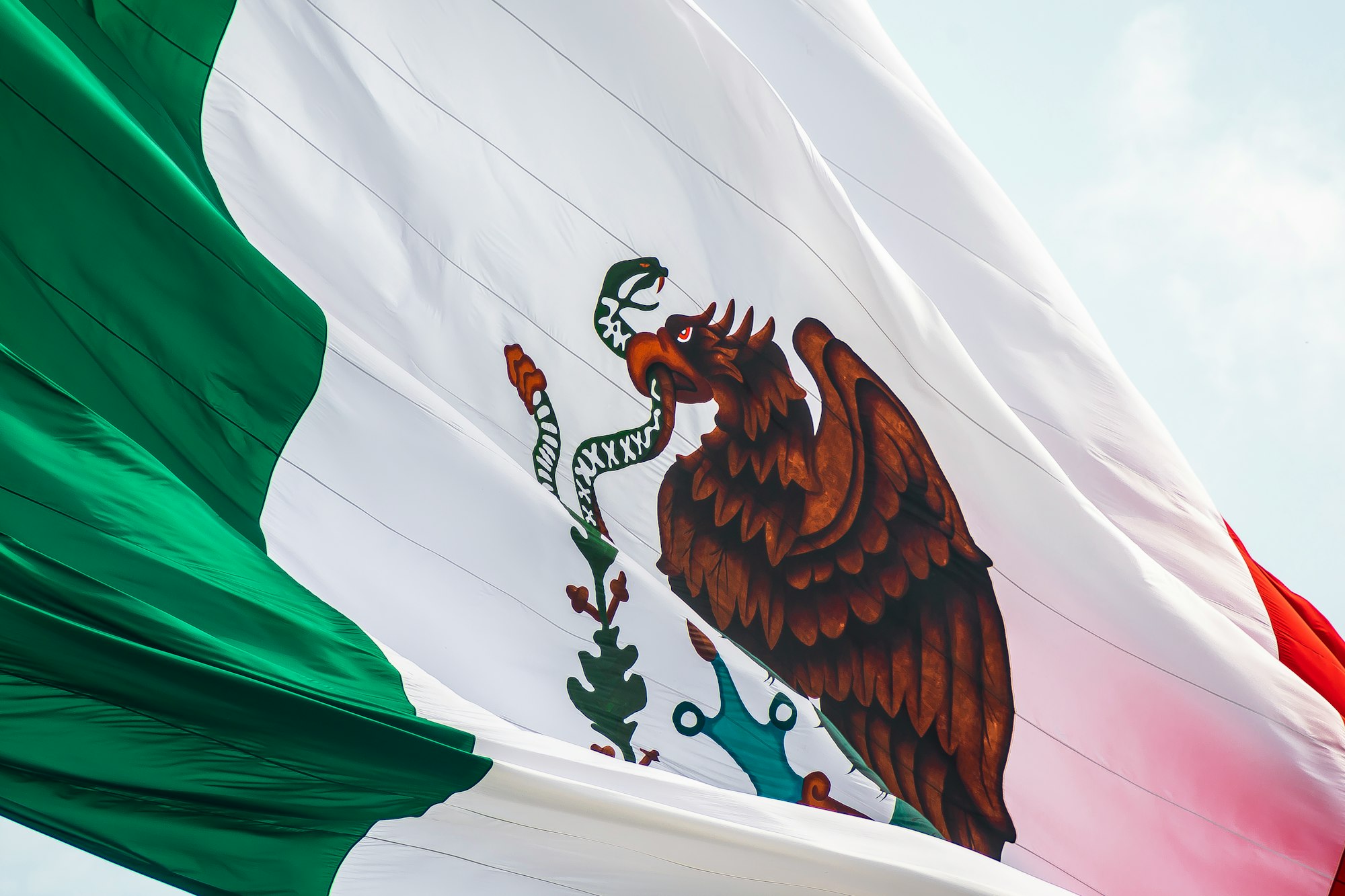The company was founded by Estée and Joseph Lauder in 1946 in New York. They started by selling basic oils and skin solutions and opened their first department store account with Saks Fifth Avenue in Manhattan in 1948.
- The company's first international account was opened in the London department store Harrods in 1960
- It launched an office in Hong Kong the following year
- Today, the company has a diversified portfolio of 25+ brands (a.o. Clinique, Bobbi Brown, Jo Malone and La Mer) marketed in nearly 150 countries
- Its product offering is primarily focused on premium makeup, skin care, fragrance, and hair care
CONSOLIDATION GAME
The company grew quickly in the 1990s helped by brand acquisitions and licensing agreements. It started by acquiring a strategic stake in cosmetics business and later setup licensing agreements with fast growing beauty-concepts.
- Estée Lauder began its brand acquisitions with a 1994 investment in Toronto-based MAC Cosmetics, which it purchased in 1998
- In 1995, Bobbi Brown Cosmetics was purchased, as was La Mer, which included the original formula for one its top luxury product, Crème de la Mer
- In 1997, the business launched Aveda, its first hair care and holistic beauty brand
- In 1999, the renowned fragrance business Jo Malone London was purchased
In the 2000s, The Estée Lauder Companies purchased a majority stake in Bumble and bumble, a popular hair care salon, and completed the acquisition in 2006. An exclusive global licensing arrangement with fashion designer Michael Kors was inked in 2003. Yet, the company isn't slowing down and took over Dr. Jart+, a Korean cosmetics brand in 2019 and the Deciem Beauty Group in 2021.
SKIN CARE, MAKEUP, FRAGRANCES AND HAIR CARE
The numerous acquisitions performed by Estée Lauder over the last years have enabled it to turn itself into a beauty juggernaut. Today, the company derives 58% of its sales from skin care products, 26% from makeup, 12% from fragrances and 4% from hair care.
Given the the wide range of consumer preferences and tastes, as well as the competition for consumers' attention, Estée Lauder has chosen to sell and promote its products through separate brands that cater to a wide range of preferences and tastes.
- Each brand has a single worldwide image that is promoted through consistent logos, packaging, and advertising to strengthen its image and set it apart from the competition
- Quality, performance, a certain lifestyle, where they are disseminated (e.g., luxury or mass), and price point are all aspects that distinguish its beauty brands
The chart below depicts the majority of the brands sold and how Estée Lauder rate them based on lifestyle and price point:

HIGH TOUCH EXPERIENCE
Estée Lauder distributes its products using distribution channels that suit its brands' luxury image and prestige status, and offers "High-Touch" consumer experiences across all channels.
- Its products are available for purchase on its own and approved retailer websites, third-party online malls, airport stores, duty-free shops, and authorized freestanding stores
- Additionally, its products are available at department shops, specialty-multi retailers, upmarket perfumeries and pharmacies, as well as prestige salons and spas
As of June 30, 2021, Estée Lauder operated approximately 1,600 freestanding stores (compared to 1,600 in 2020 and 1,500 in 2019). Most freestanding stores are operated by Estée Lauder under a single brand name, such as MAC, Jo Malone London, Aveda, Origins, Le Labo or DECIEM.
- There are also approximately 700 company-branded freestanding stores (versus 800 in 2020 and 2019) around the world operated by authorized third parties, primarily in Europe, the Middle East & Africa and Asia/Pacific
STRONG COMPETITION
Estée Lauder competes against a number of significant, well-known international skin care, makeup, fragrance, and hair care businesses, the majority of whom promote and sell their goods under many brand names. L'Oréal, Unilever, Procter & Gamble, Shiseido, Beiersdorf, LVMH, Chanel and Kao Corp are just a few of its competitors.
L'Oréal
- L'Oréal is a French cosmetics and personal care corporation based in Paris
- It is the world's largest cosmetics corporation, with operations in the fields of hair color, skin care, sun protection, make-up, perfume, and hair care
Shiseido
- Shiseido is a Japanese cosmetics conglomerate. Skin care, makeup, body care, hair care, and perfumes are among the company's product categories
- It is one of the world's oldest cosmetics companies. It was founded in 1872 and has grown to become Japan's largest cosmetics company and the world's fifth largest cosmetics company
Beiersdorf
- Beiersdorf is a German multinational corporation that produces and sells personal care and pressure-sensitive adhesives
- Elastoplast, Eucerin, Labello, La Prairie, Nivea, Tesa, and Coppertone are among the company's brands
It also has to compete with a variety of independent businesses, some of which are backed by private equity investors, as well as retailers with their own beauty lines.
THE MARKET
Estée Lauder is mainly active in the skin care, makeup and fragrances market. These are projected to grow at a compound annual growth rate (CAGR) of around 5%, pushed forward by the improving living standards in emerging markets and demand for higher-end products in developed markets.
According the Precendence Research, the global cosmetics market was valued at $ 341.1 billion in 2020 and is expected to be worth $ 480.4 billion by 2030 with a CAGR of 5.1% from 2021 to 2030.
- The worldwide cosmetics market is being boosted by rapidly changing lifestyles around the world. Mainly as worldwide per capita income has increased significantly in recent years, particularly in emerging economies
- The rise of urbanisation and the rise of middle-class consumers in developed and emerging countries has fostered the adoption of convenience-oriented lifestyles, making cosmetics more appealing to customers of all ages, particularly teenagers
According to Mordor Intelligence, the fragrances and perfumes market is projected to register a CAGR of 5.5% from 2021 to 2026.
- The expanding trend of personal grooming, together with rising demand for premium and exotic perfumes, is credited for the market's expansion
- Furthermore, the global industry is being driven by rising consumer expenditure on premium and luxury fragrances as a result of rising income levels and rising living standards
EXPERIENCED MANAGEMENT
Estée Lauder is led by Fabrizio Freda. He joined the company in March 2008 as President and Chief Operating Officer and assumed the CEO position in July 2009. Despite its corporate structure, the company is still partly led by the Lauder family as Jane, William, Ronald and Leonard Lauder are still active at the company.
- President and Chief Executive Officer of The Estée Lauder Companies
- Joined the company in March 2008 as President and Chief Operating Officer and assumed the CEO position in July 2009. Prior to joining The Estée Lauder Companies, had a 20-year career at Procter & Gamble, where he was responsible for operating, marketing and strategic efforts spanning different geographies and categories
- Serves on both the Board of Directors of BlackRock Inc. and the Advisory Board of the Global Business Initiative at Georgetown University’s McDonough School of Business
- Graduated from University of Naples Federico II in March 1981
- Executive Group President of The Estée Lauder Companies
- As Executive Group President, she is responsible for leading the company’s Estée Lauder, La Mer, Bobbi Brown, AERIN, Origins, Aveda, Bumble and bumble and Dr.Jart+ brands globally. She serves on the Executive Leadership Team and the Investment Development Committee
- Prior to her promotion to Group President in 2016, Jane served for seven years as Global Brand President, Estée Lauder, where she led the brand’s modernization and digital evolution to attract a new generation of global consumers. Preceding her leadership of Estée Lauder, Jane served in a number of key leadership roles at the Company, including President of Origins and BeautyBank, a brand innovation think tank she founded in 2003
- Holds a B.A. from Vassar College and an M.B.A. from Columbia Business School
- Executive Vice President, Enterprise Marketing and Chief Data Officer
- Leads global and regional corporate marketing, consumer and product marketing insights, global consumer care and marketing planning, and advertising and promotion effectiveness. This includes enhancing the integration of cross-channel data to drive personalized marketing and omnichannel activation, as well as leading The Estée Lauder Companies’ enterprise-wide data and analytics transformation program
- Graduated from Stanford University and is the granddaughter of the Founder and namesake of The Estée Lauder Companies and the daughter of Ronald S. Lauder, Chairman, Clinique Laboratories, LLC.
TAKE A BREATH
So… This is a lot of information. Let’s summarise:
- The company was founded by Estée and Joseph Lauder in 1946 in New York. They started by selling basic oils and skin solutions and opened their first department store account with Saks Fifth Avenue in Manhattan in 1948
- The company grew quickly in the 1990s helped by brand acquisitions and licensing agreements. It started by acquiring a strategic stake in cosmetics business and later setup licensing agreements with fast growing beauty-concepts
- The numerous acquisitions performed by Estée Lauder over the last years have enabled it to turn itself into a beauty juggernaut. Today, the company derives 58% of its sales from skin care products, 26% from makeup, 12% from fragrances and 4% from hair care
- Estée Lauder distributes its products using distribution channels that suit its brands' luxury image and prestige status, and offers "High-Touch" consumer experiences across all channels
- Estée Lauder competes against a number of significant, well-known international skin care, makeup, fragrance, and hair care businesses, the majority of whom promote and sell their goods under many brand names. L'Oreal, Unilever, Procter & Gamble, Shiseido, Beiersdorf, LVMH, Chanel and Kao Corp are just a few of its competitors
- Estée Lauder is led by Fabrizio Freda. He joined the company in March 2008 as President and Chief Operating Officer and assumed the CEO position in July 2009. Despite its corporate structure, the company is still partly led by the Lauder family as Jane, William, Ronald and Leonard Lauder are still active at the company
FINANCIAL CHECK
For the third quarter of 2021, Estée Lauder reported net sales of $4.39 billion, an increase of 23% from $3.56 billion in the prior-year period while organic net sales increased 18%.
- Net sales grew in every region and product category, reflecting the recovery in brick-and-mortar retail stores, primarily in western markets
- The Company reported net earnings of $692 million, compared with net earnings of $523 million in the prior-year period
- Diluted net earnings per common share was $1.88, compared with $1.42 reported in the prior-year period
- Reported net sales are forecasted to increase between 11% and 13% versus the prior-year period for the first quarter of 2022
- Organic net sales, which excludes the non-comparable impacts from acquisitions, divestitures and brand closures as well as the impact from currency, are forecasted to increase between 8% and 10%
THE BOTTOM LINE
The Good
- Estée Lauder is a juggernaut in the beauty industry and manages to expand its operations and profits by acquiring well-positioned brands over time
- The market for skin care and fragrances is set to continue its expansion as customers in emerging markets grow wealthier over time
The Bad
- After a large run-up, the valuation of Estée Lauder is relatively high. Leaving little room for error
THE STAKE
We have a position in Estée Lauder. Estée Lauder is a well-positioned player in the skin care, makeup and fragrances market that manages to grow its sales by acquiring and licensing brands.
- We will increase if it manages to sustain its EPS growth over the next 12 months and acquire additional brands that are well positioned in the fast changing beauty market
- We will sell our stake if earnings growth falls, pressuring it's valuation.
Disclaimer
Please note that this article does not constitute investment advice in any form. This article is not a research report and is not intended to serve as the basis for any investment decision. All investments involve risk and the past performance of a security or financial product does not guarantee future returns. Investors have to conduct their own research before conducting any transaction. There is always the risk of losing parts or all of your money when you invest in securities or other financial products.
Credits






